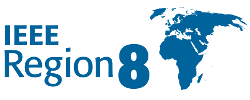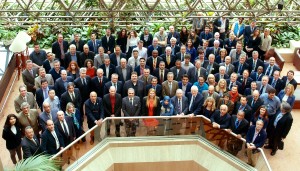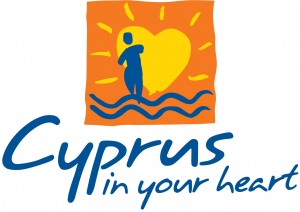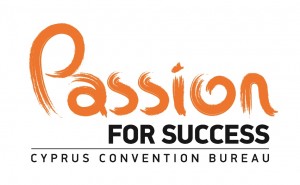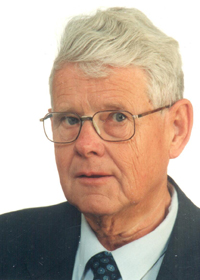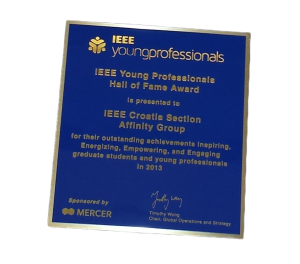On August 5th 2014, the achievements by Polish mathematicians which could also be defined as a gift to the world in the time of World War II, was paid tribute to in front of the Mathematics Institute, Polish Academy of Sciences, Warsaw, during the cutting of the “ribbon” by the IEEE President-Roberto de Marca to unveil the Milestone plaque. The writing on it reads as follows:
“ First Breaking of Enigma Code by the Team of Polish Cipher Bureau, 1932-1939. Polish Cipher Bureau mathematicians Marian Rejewski, Jerzy Różycki and Henryk Zygalski broke the German Enigma cipher machine codes. Working with engineers from the AVA Radio Manufacturing Company they built the ‘bomba’ – the first cryptanalytic machine to break Enigma codes. Their work was a foundation of British code breaking efforts which, with later American assistance, helped to end World War II.”
The highly impressive ceremony consisted of two parts:
– International Seminar „From First Breaking of Enigma Code to Modern Cryptography” which was
organized at the prestige Senate Hall of the Warsaw University of Technology, Warsaw, Poland;
– The IEEE Plaque Dedication Ceremony which took place on a square in front of the Mathematics
Institute, Polish Academy of Sciences.
Many distinguished representatives of IEEE participated in the ceremony: IEEE President J. Roberto de Marca, VP-Technical Activities Jacek M. Zurada, Director Div. IV Joseph Modelski, Region 8 Director Martin Bastiaans, R8 Director Elect Costas Stasopoulos and other IEEE members of the Poland Section with its Chair Ryszard S. Jachowicz.
The ceremony was attended by nearly 250 people, including IEEE members, inter alia Vice-President of Warsaw City Wlodzimierz Paszynski, President of Polish Academy of Sciences Michal Kleiber, President of Polish Federation of Engineering Associations – Ewa Mankiewicz-Cudny, President of Association of Polish Electrical Engineering (SEP) – Piotr Szymczak, Chairs de Affairs of Republic of France – Philippe Cerf and the First Secretary, Head of Policy Delivery Group, British Embassy Warsaw – David Wallace, as well as a significant number of high rank Polish army officers, family representatives of the awarded mathematicians and many others.

Fot.1. IEEE President Roberto de Marca [left] and (clockwise) Chair of IEEE Poland Section Ryszard Jachowicz, mathematician Rejewski’s daughter Janina Sylwestrzak and Vice Mayor of Warsaw Capital City Włodzimierz Paszyński unveil the Milestone plaque honouring Polish mathematicians for breaking the German Enigma ciphering machine codes (above in the English language and below in Polish).
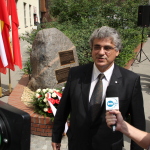
Fot.2. IEEE President Roberto de Marca in front of the Milestone monument.
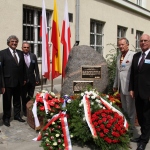
Fot.3. After the Milestone dedication
– from left to right: J.Zurada, R.de Marca, C. Stasopoulos, J.Modelski and M.Bastiaans
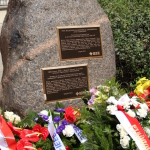
Fot.4. The Milestone monument
Short history
Enigma is an electrically wired rotor machine; a sequence of ciphers is generated by the motion of rotors in the machine. It is one of several cipher machines that were developed for military use just after World War I. During the 1930s, a trio of Polish mathematicians Marian Rejewski (1905 – 1980), Henryk Zygalski (1907 – 1978), and Jerzy Różycki (1909 – 1942) resolved the German Enigma cipher machine and broke Enigma messages. Working with engineers from AVA Radio Manufacturing Company they built the “bomba” – the first cryptanalytic machine designed to attack Enigma.
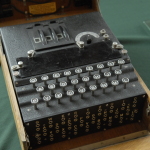
Fot.5. The Enigma cipher machine
The Reichsmarine of Germany began using Enigma cipher coding machines in 1926, and the Reichswehr began using it in 1928. The Polish Cipher Bureau had many successes during the Polish-Soviet War (1919 – 1921), and in the 1920s the Cipher Bureau monitored radio signals resulting from German military exercises. In 1928 the Poles were confronted by messages that – because of the randomness of letters in the messages – were thought to be generated by a cipher machine. The Intelligence Services of other countries believed after some trials that breaking of the Enigma codes was impossible.
By the end of 1932, Rejewski had determined the wiring of the rotors of the military version of Enigma. In 1932, the French gave Rejewski two German manuals that described the operation of military Enigma. He had managed to write a system of equations that modelled the permutations of the six indicators (which were used by the sending operator to transmit the message setting to the receiving operator) at the beginning of Enigma messages. In December 1932, Rejewski received from the French the setting sheets for September and October. This information allowed Rejewski to substitute for some of the unknowns in his system of equations and solve for the wiring of the rotors. The Polish codebreakers developed several techniques to determine settings. For example, Różycki developed the “clock method,” and Zygalski developed a set of perforated sheets. Two other methods resulted in the production of codebreaking machines – one machine to produce a catalogue of settings and their “characteristics” and another to determine the rotor settings. In 1934, Rejewski was able to exploit patterns, which he called characteristics, produced by the six-letter indicators at the beginning of Enigma messages.
Working with the engineers at AVA – Radio Manufacturing Company, Warsaw, one of the most famous codebreaking machines – the bomba – was produced. The six bomby (plural in Polish for “bomba”) searched through all 105,456 rotor settings for those that exhibited patterns that could be determined from the indicators after a sufficient number of messages were intercepted. As there were three rotors and three positions for rotors in Enigma, there were six possible rotor orders; therefore, six bomby were produced. In July 1939, as war with Germany loomed over Poland, the Polish codebreakers met just outside Warsaw with British and French codebreakers. During this meeting, the Poles described their achievements against Enigma. As a result of the meeting, both the British and the French received one of the Enigma doubles and information on the methods used by the Poles to solve daily keys. On September 1, 1939, Germany attacked Poland, and British codebreakers at Bletchley Park continued the attack on Enigma. British mathematicians such as Alan Turing and Gordon Welchman and engineers such as Harold “Doc” Keen and Thomas “Tommy” Flowers developed cryptanalytic machines to attack Enigma and other German ciphers. One of the machines to attack Enigma was the Turing-Welchman bombe. (IEEE Milestone, Bletchley Park, 1939 – 1945). Both the British bombe and the Polish bomba searched through all possible Enigma rotor settings for settings that produced patterns that had been noticed by the codebreakers.
The British bombe searched for patterns in Enigma messages, and the Polish bomba searched for patterns in Enigma indicators. After the United States had entered the war, US Navy mathematicians at Naval Communications in Washington, DC, designed cryptanalytic machines to attack Japanese ciphers and machines to assist the British with the attack on naval Enigma. These codebreaking machines were engineered by Joseph Desch and other engineers at the Naval Computing Machine Laboratory located at National Cash Register Company in Dayton, OH. One of the machines to attack naval Enigma was the US Navy cryptologic bombe. (IEEE Milestone, Naval Computing Machine Laboratory, 1942 – 1945).
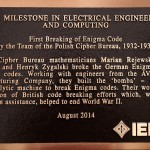
Fot.6. The IEEE Milestone plaque
 Click here for the Region 8 Committee Group PhotoSections Congress 2014 Information
Click here for the Region 8 Committee Group PhotoSections Congress 2014 Information